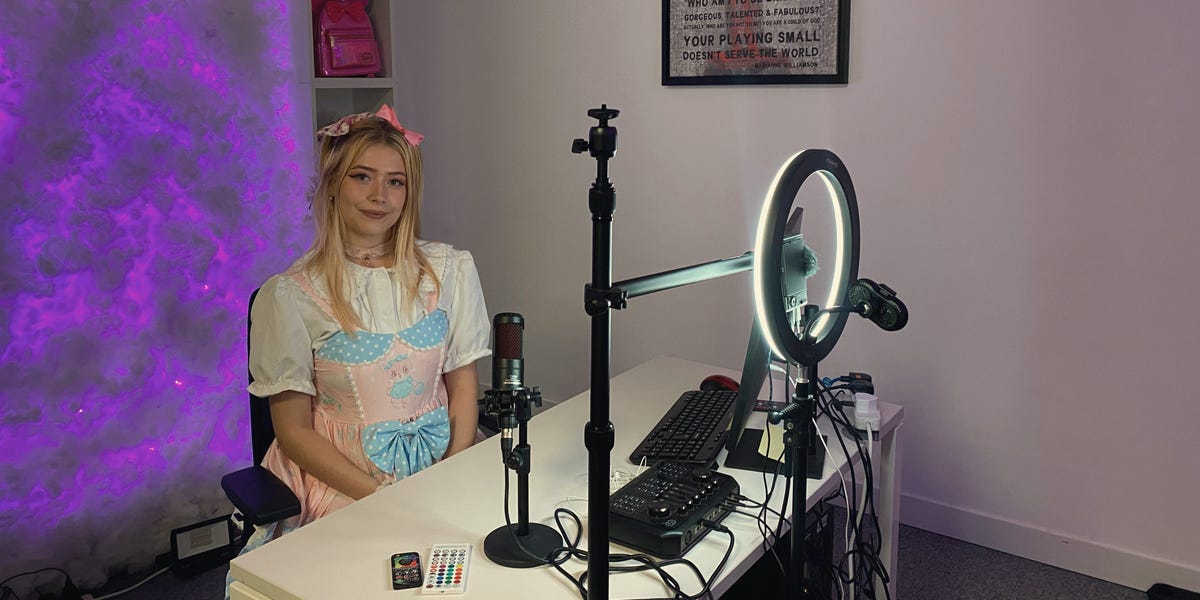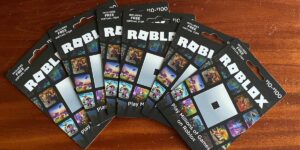Noah Cameron Maydale and Francesca Batley do livestreaming on TikTok for a living.
Five days a week, including the occasional weekend, they commute into a warehouse-like coworking space in the small English town of Hemel Hempstead, just north of London.
There, they each sit in their cubicle — a windowless, neon-lit, 100-square-meter office space with sparse decoration — for four to six hours, livestreaming themselves as they sing and perform to audiences that range between 50 and 150.
Maydale (who goes by @knowasound, or just Noah, on TikTok) and Batley, whose stage name is Fairie (@fairiefairie on TikTok), are two of the first creators to join a relatively new program started by TikTok agency GravitasQ.
GravitasQ is one of dozens of the platform’s “partner agencies,” companies that are contracted to recruit creators and train them to become livestreamers. TikTok has been investing heavily in its livestreaming offering over the past few years, both as an e-commerce avenue and for entertainment purposes, and agencies are part of this strategy.
TikTok livestreaming in the UK has been growing faster than the company’s ads business, company filings show. In-person live studios are a recent addition to TikTok’s strategy and one that the company has been developing with select agencies. The GravitasQ space began operating in January 2024.
“They feed us information that will help us make strategic decisions,” said Dipesh Pattni, the founder of GravitasQ. “I had a good idea that running a studio could bear even stronger results than when you train somebody online because of the insights TikTok gave us.”
TikTok provides GravitasQ with best-practice info on how to use the studio and trend predictions, and also subsidizes part of the program so that creators can access it for free. Agencies are paid on a performance-based model.
“The other thing to bear in mind is that over time, creators won’t be able to get this service for free,” Pattni said. “Eventually, creators will have to offer a percentage of their earnings to the agency.”
Most days, working with Noah and Fairie are Emilia Harker and Sitesh Pattni (Dipesh’s cousin), two of GravitasQ’s 13 employees, who help the creators out with their setup and ensure that the livestreams run smoothly.
The goal of a TikTok livestream is to keep audiences engaged and entertained — and creators have been known to do anything from filming themselves in their sleep to taking part in the NPC character trend. In exchange, the viewers can send “gifts,” virtual icons that can be converted into real money.
Noah and Fairie have been able to make more as TikTok livestreamers than they’d ever made before as musicians, they said, despite having small followings for TikTok’s standards — about 5,000 each.
“It’s mind-blowing to me because I’m a solo indie musician,” Noah said. “I play gigs in my town, and I try and earn enough money to pay for my Tesco [grocery] bill. I’m not used to having my content seem like it’s worth something, or have people pay to watch my content.”
In their third month, Noah made over $3,000 from his livestreams, while Fairie’s earned around $1,850, Pattni said.
GravitasQ’s program offers guaranteed earnings of $1,200 a month for three months. In those three months, the studio functions as an incubator, getting creators up to speed so that they can then build a career as livestreamers independently.
“I certainly see a huge opportunity because artists are really struggling,” Pattni said. “On TikTok Live, if you’ve got a great voice and people like you, and you are willing to interact with them, you can build your own audience, and people will really get behind you as a singer or musician or whatever your talent may be. We really feel like we are helping the talent market.”
The live studio is still in its early days, and the setups and strategy change often. Here’s what it looked like and what Fairie and Noah were doing there at the end of April.




